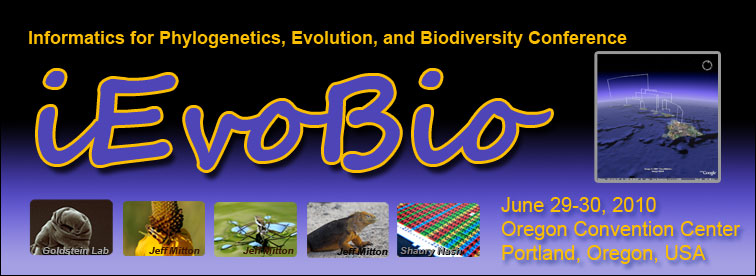
Challenge: Visualization
New visualization methods for evolutionary data
From phylogenetic trees to population networks, whether on printed pages or in GoogleEarth, visualizing evolution is a key part of our discipline. Inspired by the challenges and opportunities visualizing presents for our field, the first iEvoBio challenge is "To create a new visualization tool or platform to support evolutionary science".
The challenge is deliberately wide ranging: the scope of the visualization tool could be highly focused or could handle many use cases. Entries could range from geophylogenies to visualizing extremely large phylogenetic trees, to mashups showing relationships between lineages and other types of data (e.g. conservation status).
The work should be previously unpublished or very recently published (< 1 year). The visualization may or may not be interactive or online, but must be produced by software that is available as open-source*. Work taking advantage of APIs is encouraged, whether these are APIs for an open source project (such as Encyclopedia of Life, Biodiversity Heritage Library, or TreeBASE) or are public APIs for a non-open source project (such as Google or Yahoo Maps or Flickr).
Abstracts and screenshots and/or URLs need to be submitted by June 21, 2010, to challenge@ievobio.org (your submission is only received when acknowledged by a reply email). Selected candidates will make short minute oral presentations to demonstrate their visualization in a "Challenge session" at the conference, and will automatically be entered into the Software Bazaar session if suitable. iEvoBio participants, collectively, will judge the submissions and there will be cash prizes for the first place ($1,000) and runner up entries.
(*) To meet the open-source eligibility criteria, the software source code must be downloadable at the latest by the time of the conference under an OSI-approved open-source license (see compliant licenses).
top
